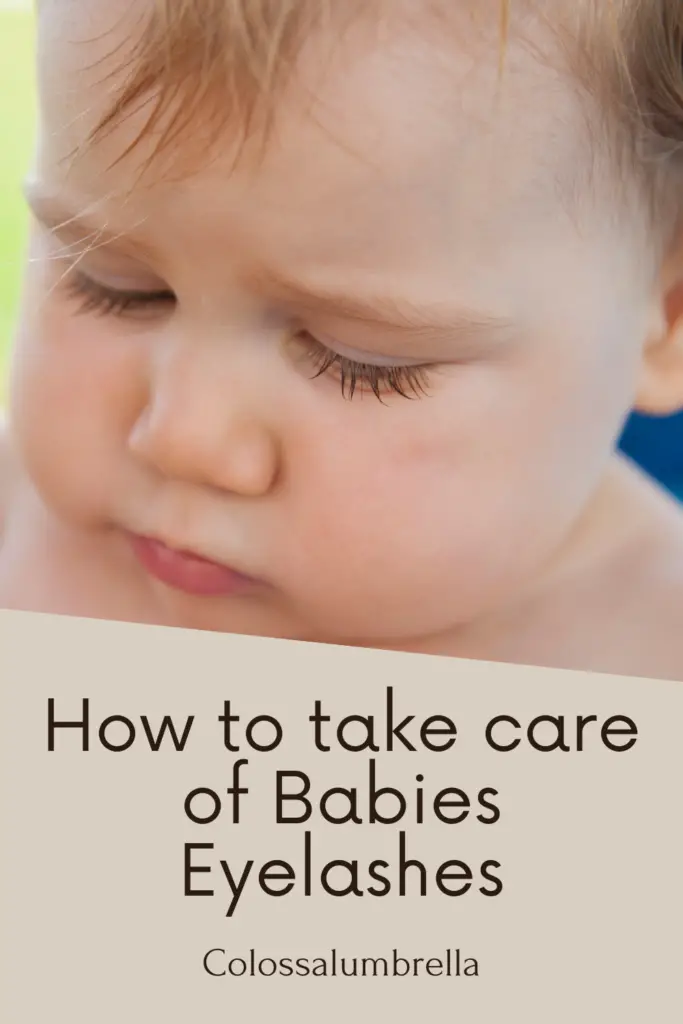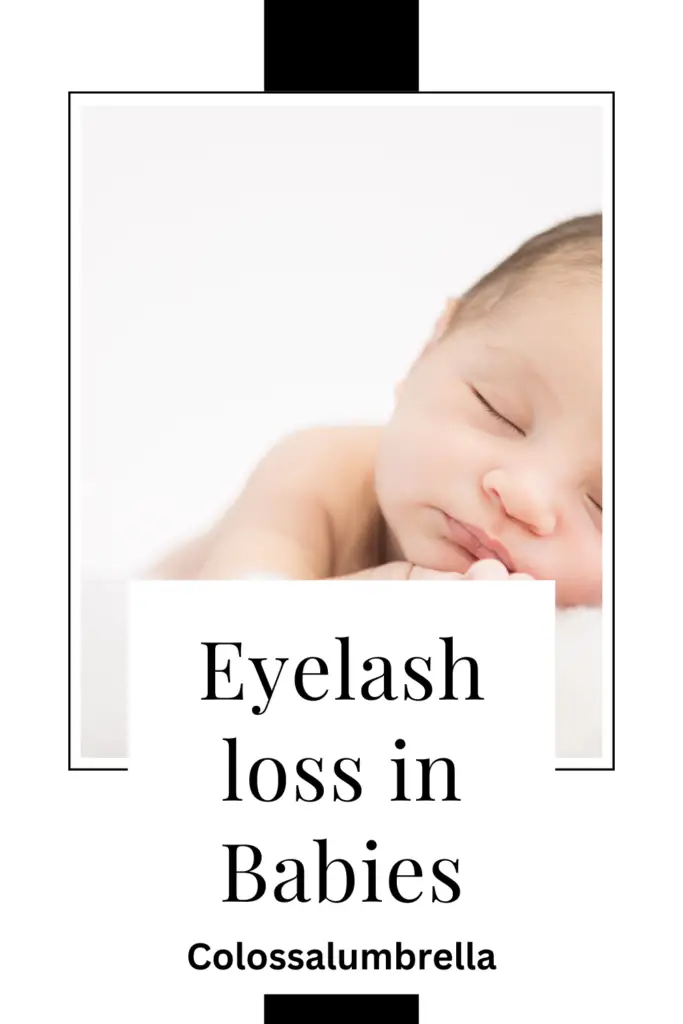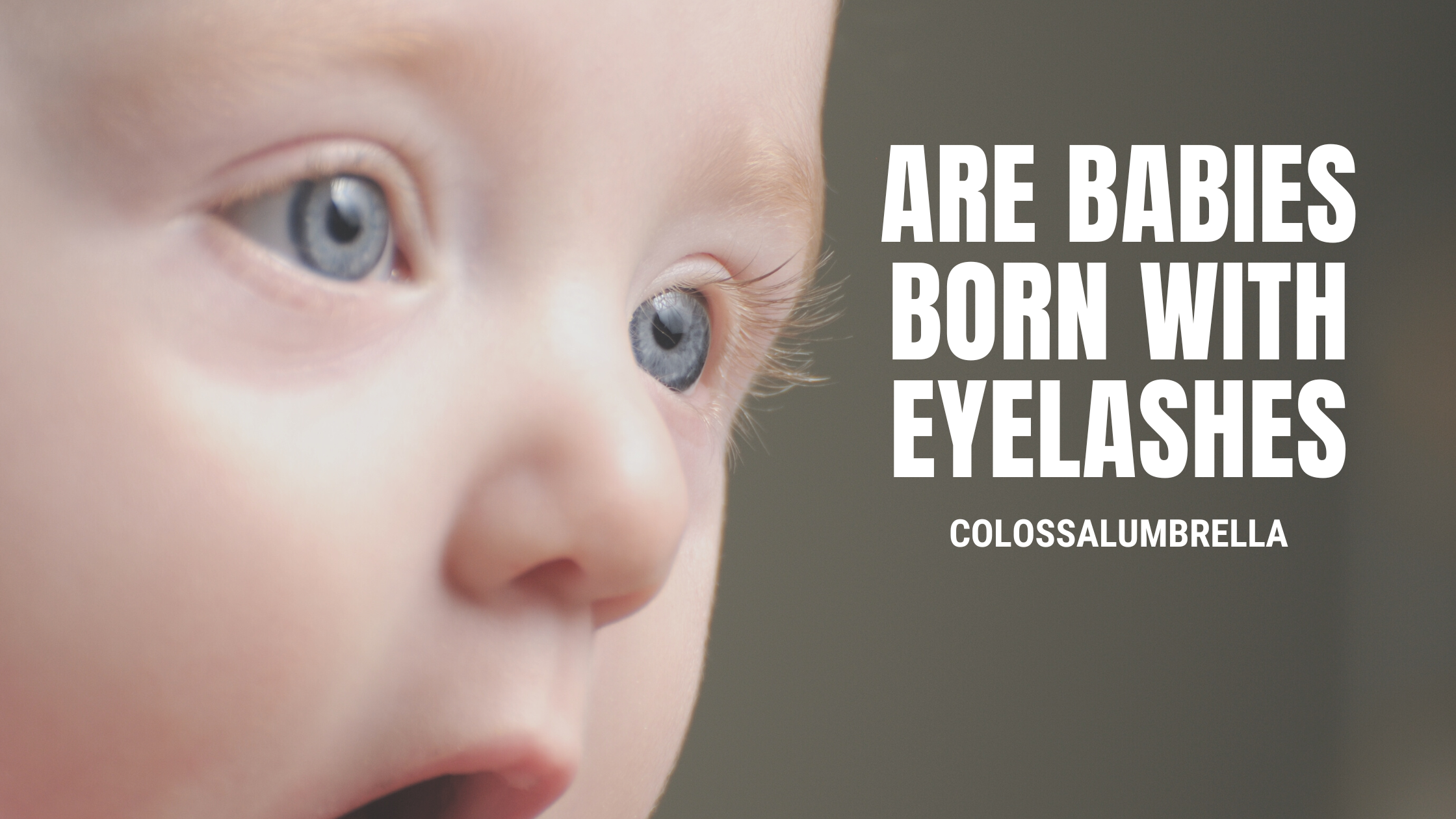Contents
Are babies born with eyelashes? If you’re a first time parent, this is likely one of the many questions that have crossed your mind about your newborn’s appearance. Baby’s eyes are precious, and the question of whether they have beautiful eyelashes is valid. The good news is that yes, babies are born with eyelashes. Hair growth on the eyelids happens during fetal development, and hair follicles are present before a baby is even born. But what do baby eyelashes look like? Do premature babies have eyelashes? Can a baby’s eye color be determined by their lashes? What about eye infections?
This post will answer these questions and more. From long lashes to short lashes and everything in between, this blog post will cover everything you need to know about newborn eyelashes and how they protect their eyes from small particles. I will also discuss how eyelash growth varies among babies and how it’s an indicator of the color of a baby’s hair and eyes.
Are babies born with eyelashes?
Babies are indeed born with eyelashes, and this is a sign of a healthy baby. The development of baby’s eyelashes happens during fetal development, and hair follicles are formed as early as the second trimester of pregnancy. The growth of baby’s eyelashes is influenced by the mother’s hormones.
After birth, the baby’s face is one of the best things to admire, and their eyelashes are an important part of their facial features. Even though babies’ eyelashes are barely visible, they are already functioning to protect their eyes from foreign objects, dust, and debris. Parents need to be cautious and keep an eye on their baby’s eyes as newborns are prone to having sticky eyes, which can be cleaned with a cotton swab. Some babies may be born with extra-long eyelashes, which may be due to the eyelash growth cycle or genetics.
Lower lashes or bottom lashes are also present in newborn babies, although they are usually shorter and finer than upper lashes. In some rare cases, babies can have a condition called eyelash trichomegaly, which means that their eyelashes grow much longer than usual. Overall, babies’ eyelashes are a fine work of nature and can bring out the beauty in a new baby’s face.
The importance of eyelashes
Eyelashes are not just an aesthetic feature of the face; they play a crucial role in protecting the eyes from various external elements. They act as a barrier to dust, debris, and other particles, preventing them from entering the eyes and causing damage or infections.
Moreover, eyelashes also have a sensory function. They are sensitive to touch, and if something touches them, they trigger the blink reflex, which protects the eyes by closing them momentarily. This reflex is essential in protecting the eyes from foreign objects, such as small particles or insects, that may cause injury or infection.
Additionally, longer eyelashes have been associated with femininity and attractiveness, which can have an impact on one’s self-esteem and confidence. However, it’s important to remember that everyone’s eyelashes are unique, and the length, thickness, and color can vary widely based on genetics.

Variations in eyelash appearance
Although all babies are born with eyelashes, their length, thickness, and color can vary widely. Some babies may have long, dark lashes that are the envy of adults, while others may have barely visible lashes that seem to disappear altogether. The variations in the appearance of the lashes are due to genetics, just like other physical features.
The color of a baby’s eyelashes can vary based on the amount of melanin they have. Melanin is a pigment that gives color to our hair, skin, and eyes. Newborn babies with less melanin may have very light hair and eyelashes, while those with more melanin will have darker hair and lashes. Similarly, a baby’s eye color can also be an indicator of their eyelash color.
The length and thickness of a baby’s eyelashes are also determined by genetics and vary among individuals. It’s not uncommon for babies to have extra-long eyelashes, especially baby girls. However, some babies may have short eyelashes, which is also normal.
Interestingly, eyelashes grow in an eyelash growth cycle that is similar to the hair growth cycle. The cycle includes three phases: anagen, catagen, and telogen. The anagen phase is the growth phase, where the eyelashes grow longer and thicker. The catagen phase is the transition phase, where the growth stops, and the hair follicle shrinks. The telogen phase is the resting phase, where the hair falls out, and a new growth cycle begins. This cycle can take up to several months to complete.
Additionally, babies may have different eyelash patterns on their upper and lower lashes. The lower lashes may be shorter and sparser than the upper lashes. In some cases, babies may develop eyelash trichomegaly, a condition where the eyelashes become much longer and thicker than usual. This is a rare condition that can be associated with certain medical conditions.
Eyelash loss in babies
It is not uncommon for newborn’s eyelashes to fall out during the first few months of life as a part of baby’s development. This is because the growth of their eyelashes follows a natural cycle, which includes a resting phase followed by a period of growth. Just like adult eyelashes, baby’s eyelashes also go through this growth cycle, which lasts for about six to twelve weeks. During this time, it is normal for the upper lashes to grow longer than the bottom lashes.
Factors like direct sunlight, surface of the eye, and signs of infection can also cause the loss of eyelashes in babies. A mother’s diet can also have an impact on the growth of a baby’s hair, including their eyelashes. However, it’s essential to note that any concerns related to extra eyelashes or prominent eyelashes, or any other internal issue should be evaluated by a healthcare professional, and parents should always seek professional advice in such cases.
It’s a common myth or fake news that eyelashes stop growing at a certain age. The growth of eyelashes, just like hair, may slow down as babies grow older, but it doesn’t stop completely. By the time a baby reaches six months of age, their eyelashes should have reached full length.
It’s essential to keep in mind that baby’s eyelashes are delicate and should be handled with care. Parents should avoid using cotton swabs or any foreign object near the surface of the eye to prevent a sticky eye or any other medical conditions.

Medical condition that can affect eyelashes in babies
There are several medical conditions that can affect eyelashes in babies. One such condition is eyelash trichomegaly, which causes the lashes to grow to an excessive length, thickness, and curl. It can be a side effect of certain medications or be associated with underlying conditions like autoimmune diseases, or cancer.
Another condition that affects eyelashes is blepharitis, which is an inflammation of the eyelids that can cause redness, itching, and swelling. In severe cases, it can also lead to eyelash loss in babies. Additionally, some babies may be born with congenital disorders like ectodermal dysplasia, which can cause sparse or absent eyelashes, along with other abnormalities in teeth, hair, and sweat glands.
If you notice any unusual changes in your newborn’s eyelashes or suspect signs of infection, it’s important to seek professional advice from a pediatrician or an eye doctor. While some variations in the growth of their eyelashes are normal during the first few months of life, sudden changes or persistent issues could be a sign of an internal issue that needs to be addressed.
FAQs on are babies born with eyelashes
When Do Eyelashes Form?
Eyelashes begin to form during the fetal stage of development, around 7-8 weeks of gestation.
Why Do Some Babies Have No Eyelashes?
It is uncommon for a baby to be born without eyelashes, but if it does happen, it is usually due to a genetic condition.
Do Babies’ Eyelashes Change Color?
Yes, a baby’s eyelashes can change color over time as the melanin in their hair follicles increases.
When Do Babies’ Eyelashes Grow to Full Length?
A baby’s eyelashes typically grow to their full length by around six months of age.
How can I thicken my baby’s eyelashes?
There are no proven methods for thickening a baby’s eyelashes, but ensuring proper nutrition and keeping the area clean and moisturized may promote healthy growth.
Conclusion
Eyelashes may seem like a small feature, but they play a crucial role in protecting the eyes and are an important aspect of a baby’s development. While variations in length, thickness, and color are normal, any signs of infection or other medical conditions affecting the eyelashes should be monitored and addressed with professional advice. It’s essential to remember that eyelashes, like other hair on a baby’s body, can fall out and regrow naturally during the first few months of life.
As parents, we can enjoy watching our babies grow longer and thicker eyelashes, but we must also be vigilant for any signs of underlying issues. With proper care and attention, healthy babies can develop prominent and beautiful eyelashes that will stay with them for life.
I would stay connected and keep you updated with parenting tips, pregnancy guides, creative ideas, easy crafts, and Free Printables. Subscribe to Colossalumbrella to get new ideas delivered to your inbox. Follow me on Facebook, Pinterest, Twitter, and Instagram.
Other Moms also asked
- 10 Effective Strategies on How to Get Newborn to Sleep in Bassinet
- When to Start Oil Massage for Newborn Baby – 15+ Important FAQs covered
- 7 Prominent Signs of dehydration in newborn & how to prevent it.
- Are bibs safe for newborns! What to Look for When Buying
- Newborn breathing with mouth open – True facts and Myths
Shop
I would appreciate you support to help me run this blog. I run a small affiliate shop, which means that if you click on the link and make a purchase, I may earn a commission at no additional cost to you.
Disclaimer: The content of this blog is for informational purposes only and is not intended to be a substitute for professional medical advice, diagnosis, or treatment. Always seek the advice of your physician or other qualified healthcare providers with any questions you may have regarding a medical condition.
